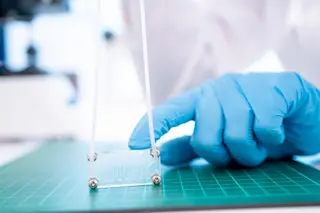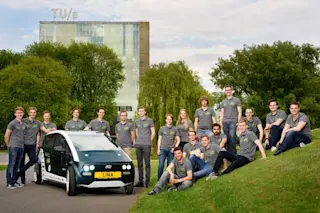This a motorized wheelchair is so simple, even a monkey can drive it.
In another step forward for the field of Brain-Machine-Interactions (BMI), researchers from Duke University's Medical Center have taught a monkey to operate a wheelchair using only its brain. The system uses an array of microwire electrodes implanted in the monkey's skull to read its brain activity and translate those signals into physical commands.
Such technology may one day give patients suffering from paralysis or ALS the ability to control machines with their thoughts — replacing damaged bodies with adaptive robots.
The project was led by researcher Miguel Nicolelis, who has already taught monkeys to control mechanical arms with a similar system. He also constructed the mechanical exoskeleton that allowed a paraplegic to make the opening kick at the 2014 World Cup. Nicolelis' most recent project moves beyond limbs and involves moving the whole body through space, a ...














